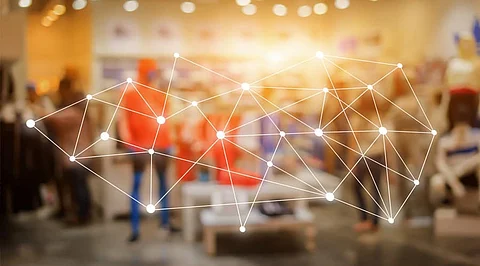
- Insights
- Cryptocurrencies
- Stocks
- White Papers
- Industry
- Geography
- Insights
- Cryptocurrencies
- Stocks
- White Papers
- Industry
- Geography


Numerous wearables are electronic gadgets, for example, watches and fitness trackers that go about as peripherals for a cell phone. But on the other hand, we're seeing something new – wearables as fashion, in clothing, shoes, and different accessories. It is termed smart clothing or IoT clothing. Surely, a recent survey by the World Economic Forum (WEF) uncovers that 92.1% of corporate leaders say that 10% of individuals will wear garments connected to the internet by 2025, and 85.5% say that 10% of eyewear will be internet-connected
A new technology integration that has danced up the ramp of the fashion industry is IoT otherwise known as the Internet of Things. IoT is a technology that automates our reality by permitting us to communicate and interface with everyday objects like clients, manufacturers, organizations, stores, and so forth by utilizing the internet.
Smart clothing technology isn't something new, however, as of recently, it's been fabricated in small batches for very niche purposes – like professional sports.
One of the most un-meddling smart clothing technology and applications is embedding IoT sensors into the fabric of shirts, jeans, socks, or shoes. Pieces of clothing that fold and stretch to fit the body can contain electronic parts that gather information. Information produced from skin or sweat in contact with the fabric could comprise the wearer's pulse, blood glucose level, body temperature, blood pressure, blood oxygen level and any movement. For instance, medical tech startup Rhaeos has recently built up a wearable for noninvasive checking of patients experiencing an accumulation of brain fluids. Likewise, wearable technology clothing can be utilized to screen, track, and ensure those dearest to a consumer.
IoT sensors fundamentally optimize the tasks for its users in smart clothing. It helps in chopping down the loss and in empowering more proficient management of inventory because of its tracking feature. From monitoring any instances of fraud by barcodes and RFID labels, to creating customer loyalty to ensure users are aware of the current trends in wearable technology clothing.
The German men's national soccer team wears smart tech clothing in the form of jerseys by Adidas. The shirts track a wide range of information during the team's games and exercises. Mentors use metrics like speed, pulse and distance to make future training plans and create a game strategy. Several NBA teams are utilizing jerseys inserted with an innovation called OptimEye for early injury recognition and faster recovery. The minuscule gadget is woven into the players' jerseys nearby between the shoulder bones. It's ready to measure speed, pulse, jump height and other information. Mentors and coaching staff at that point review the information for patterns or irregularities that demonstrate a player is easing back down or changing form while performing, which can be an indicator of a costly injury.
IoT in smart clothing can likewise be utilized to track the old aged, hospital patients, and children. A GPS tracker in the fabric can send an alert, for instance, when a patient with dementia has strayed or when a high schooler has not shown up at a destination at the expected time. This sort of wearable technology clothing can likewise be utilized in risky situations, for example, building sites or mountaineering campaigns, where everybody's whereabouts should be accounted for.
Since IoT clothing has various contact points with the body, it is likewise conceivable to incorporate more functionality into the framework than other kinds of wearables permit. For instance, rather than simply checking the user's pulse and action level, a shirt with IoT sensors can acquire extra blood-oxygen and glucose-level information. Thus, a more all-encompassing and possibly more precise observation of the user arises.
A new Google activity called Project Jacquard is taking wearable technology clothing a stride further by making a smart fabric that is sensitive to touch, much like our smart device. The same fibers that are consolidated to make the touchscreen on your iPhone can be woven with traditional fabrics to make wearable hardware. This implies you can change the volume of your earphones by tapping your sleeve. Or on the other hand, answer a call by flipping your wrist in a specific way.
In 2015, the e-textiles market was accounted for to be valued at $100 million. Yet, as demand for smart clothing technology grows and mass adoption brings down price points, the market is assessed to develop to $3 billion in the coming 10 years. Smart clothing is simply one more illustration of the integration of IoT and smart frameworks at play in our lives.
